Wednesday, February 18, 2009
Saturday, October 11, 2008
La Urraca
-Líneas Aéreas La Urraca-
Histórica:
La sociedad fue formada en 1962 por los hermanos Henao Jaramillo con la finalidad de prestar un servicio de transporte aéreo de abastecimientos a las comunidades más apartadas de los Llanos Orientales y los Territorios Nacionales. Su sede de operaciones se estableció en el aeropuerto Vanguardia de la ciudad de Villavicencio. Se iniciaron las operaciones con dos aviones Douglas B-18 Bolo. Este extraño modelo fue utilizado en la Segunda Guerra Mundial como bombardero, posteriormente convertido para el trasporte de carga.
La Urraca recibió posteriormente la autorización de transporte aéreo de pasajeros y vuelos especiales de carga a cualquier aeropuerto del país.
Desde el principio se corrió con muy mala suerte. El primer suceso tuvo lugar cuando en el vuelo de entrega de un avión Curtiss C-46, recientemente adquirido en los Estados Unidos sufrió un grave accidente cuando efectuaba una escala en el aeropuerto de Kingston en Jamaica el 26 de noviembre de 1962. Más tarde en el fatídico año de 1965, se perdieron los dos Douglas B-18. El primero, el HK-367 se estrelló en la localidad de Tío Barbas en el Vaupés, el 26 de enero. El segundo, el HK-537 se accidentó el 29 de junio del mismo año en San Pedro de Jagua, una población localizada en el piedemonte llanero en el límite entre Cundinamarca y el Meta.
Tiquetes de La Urraca


Imágenes: Jaime Escobar
Para reemplazarlos, se habían adquirido varias unidades Douglas DC-3 para cubrir las rutas regulares secundarias y vuelos especiales de carga. Desde la base de Villavicencio se ofrecían servicios a Cúcuta, Arauca, Miraflores, Mitú, San José del Guaviare, Tame, Yopal, Aguazul, Montería, Arauquita, Paz de Ariporo, Puerto Inírida, San Luis de Palenque, Trinidad y Orocue. Estas rutas habían sido operadas regularmente hasta entonces por AEROTAXI, la subsidiaria del sistema AVIANCA.
El 12 de febrero de 1970 se accidento en las cercanías de Puerto Inírida un DC-3 con matrícula HK-1270. El piloto reporto daños en el motor numero uno y trató de regresar al aeropuerto. Por falta de potencia, no alcanzo a llegar y se precipito a tierra. Murieron 4 tripulantes y 8 pasajeros.
Entre octubre y noviembre de 1970 se adquirieron tres unidades Handley Page Herald, turbohélices de pasajeros de fabricación británica; el HK-715 “Bachué” el HK-718 “Bochica” y el HK-721 “Cacique Nutibara”. Estas fueron asignadas a las nuevas rutas secundarias recientemente adjudicadas por la Aeronáutica Civil y que habían dejado de ser operadas temporalmente por la empresa TAC. Se estableció la base secundaria en el aeropuerto de Eldorado y se iniciaron los servicios regulares a Barrancabermeja, Valledupar, Maicao, Riohacha, Santa Marta, Barranquilla y posteriormente a San Andrés. De igual manera se le adjudicaron las rutas secundarias de Bogotá a Popayán y Pasto y Pasto-Cali-Pasto, recientemente abandonadas por Aerolíneas TAO. Los aviones fueron pintados con un diseño en color rojo muy atractivo y mantenían el logotipo con una simpática urraca, que recordaban a personajes de las tiras cómicas.
HK-715, Handley-Page Herald en Bogotá, 1974

Foto: Jaime Escobar
HK-718, Handley-Page Herald en Barranquilla, 1971
Foto: Jaime Escobar
HK-721, Handley-Page Herald en Bogotá, 1971

Foto: Jaime Escobar
A finales de 1971 se llegó a un acuerdo con TAC Aerovías del Cesar para operar en sus rutas asignadas los tres Vickers Viscount recientemente adquiridos por ellos. El HK-1412 fue bautizado con el nombre de “Yurupari”.*
Desafortunadamente, otro de los Viscounts se vino a tierra a pocos kilómetros después de decolar del aeropuerto Eldorado en el municipio de Funza, cuando cumplía un vuelo regular a San Andrés. En el siniestro del HK-1347 ocurrido el 21 de enero de 1972, perecieron 5 tripulantes y 15 pasajeros. La investigación concluía que había ocurrido una explosión a bordo. Los detalles no se conocieron.
HK-1412, Vickers Viscount en El Dorado, 1972 Foto: Jaime Escobar
Foto: Jaime Escobar
El 7 de mayo de 1972 se accidentó en las cercanías del aeropuerto de Valledupar el Herald HK-721. Para fortuna de los pasajeros, se efectuó un aterrizaje de emergencia en un potrero aledaño y no hubo pérdidas humanas que lamentar.*
A raíz de estos accidentes se termino el acuerdo con TAC y se perdieron los derechos de operar las rutas a la Costa Atlántica. La aerolínea regreso a sus orígenes y recogió nuevamente su operación en Villavicencio, fortaleciendo sus servicios a los Llanos Orientales, utilizando los dos Herald y los DC-3. Se adquirieron dos unidades Britten Norman Islander, de 8 pasajeros para completar la flota. Se cambio el diseño corporativo de la empresa y los aviones se pintaron con vivos colores, manteniendo la imagen de la urraca como símbolo principal: el HK-500 en azul, el HK-1175 en naranja, el HK-1315 en verde, el HK-715 en amarillo y recibió el nombre de “Ciudad de San José de Cúcuta”, el HK1241 en rojo.
HK-500, DC-3 en Vanguardia (Villavicencio), 1974
 Foto: Jaime Escobar
Foto: Jaime Escobar
HK-1175, DC-3 en El Dorado, Octubre de 1974

Foto: Jaime Escobar
HK-1315, DC-3 en Vanguardia (Villavicencio), 1974
 Foto: Jaime Escobar
Foto: Jaime Escobar
Unos meses después, el 2 de noviembre de 1973 se estrello el HK-718 cuando aproximaba al aeropuerto Vanguardia de Villavicencio. El avión había aterrizado en Arauca, después de haber efectuado su recorrido cotidiano desde Villavicencio con escalas en Paz de Ariporo y Tame. Se identificó una fuga de fluido hidráulico en el tren de aterrizaje de nariz. Luego de haber cambiado una manguera del sistema, el avión continúo su vuelo a Cúcuta. Después de apenas 5 minutos de vuelo se reportó un fuerte olor a humo en la cabina. Parecía que el tren de aterrizaje seguía extendido, aunque los indicadores en la cabina de mando decían lo contrario. La tripulación decidió regresar a Villavicencio para hacer dos sobrepasos a baja altura para identificar el problema y tomar las medidas del caso. Aproximando a la pista 22, el piloto recibió instrucciones de apagar el motor numero uno como medida de precaución. Sin embargo, a esa baja altura, el avión perdió sustentación y se vino a tierra explotando en llamas; 6 de los 16 ocupantes del avión perdieron la vida incluyendo la tripulación de mando.
HK-1241, Britten-Norman Islander en Vanguardia (Villavicencio), Noviembre de 1978
 Foto: Jaime Escobar
Foto: Jaime Escobar
El tercer Herald corrió con igual suerte. El 22 de junio de 1975 tuvo que efectuar un aterrizaje forzoso en una pista de tierra bastante corta, ubicada en la hacienda La Libertad. El avión finalmente tuvo que ser abandonado allí, ante la imposibilidad de recuperarlo.
Los DC-3 fueron finalmente retirados de servicio en 1978. Se adquirieron entonces tres unidades Curtiss C-46 para ser utilizados exclusivamente para el transporte de carga. Nuevamente otro accidente tuvo lugar el 27 de Mayo de 1979 cuando el HK-1857 se accidento en las cercanías de El Yopal.
HK-1857, Curtiss C-46 en Vanguardia (Villavicencio), Noviembre de 1978
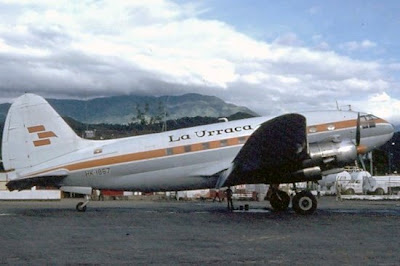
Foto: Jaime Escobar
La empresa optó finalmente por suspender todas sus actividades a partir de 1980. Líneas Aéreas La Urraca se lleva el poco honroso primer puesto en tener el mayor número de accidentes por flota. De las 24 aeronaves que han sido identificadas como registradas a su nombre, 12 sufrieron accidentes graves. Esto es el 50% de su flota en 18 años de operaciones, lo que significa un pobrísimo record de seguridad ante la falta de control efectivo por parte de las autoridades aeronáuticas.*
Destinos:
Nacionales:
Aguazul, Arauca, Arauquita, Barrancabermeja, Barranquilla, Bogotá, Cali, Cúcuta, Maicao, Miraflores, Mitú, Montería, Pasto, Paz de Ariporo, Popayán, Puerto Inírida, Orocué, Riohacha, San Andrés. San José del Guaviare, San Luis de Palenque, Santa Marta, Tame, Trinidad, Valledupar, Yopal.*
Internacionales:
Flota:
Britten-Norman IslanderCurtiss C-46Douglas B-18 BoloDouglas DC-3Handley-Page Herald Vickers Viscount
Códigos:
OACI: N/DIATA: N/D
Período de Operación:
1962 - 1980
HK-715, Handley-Page Herald en El Dorado, 1971.
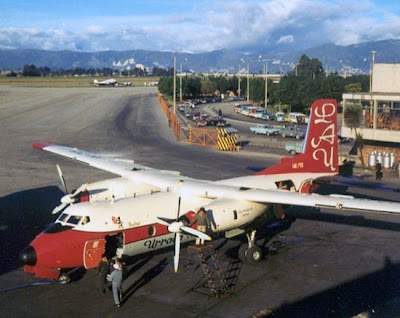
Foto: Jaime Escobar.
Friday, September 26, 2008
El Domador
From: realengo
Added: January 29, 2007
Fragmento del documental "Domador" realizado por Joaquin Cortes, en un hato en las sabanas del estado Apure Venezuela
...Epale que BUENO!!!! gracias por subirlo. Este documental lo vi hace años y desde hace rato lo he querido ver! gran trabajo de Joaquin Cortes
...esta muy bueno ese video exelente me gusta cuando naricean a la vaca para juntarlas con el resto podrias subir el septimo paralelo es muy bueno tambien pero un poco mas viejita yo soy apureño hasta la muerte muy buen video graciaspor subirlo
Friday, July 4, 2008
Thursday, June 26, 2008
Mustangs
The killing fields
Jun 26th 2008
From The Economist
Long a symbol of freedom, America's wild horses may soon be no more
In 1964 a new car was launched at the New York World's Fair: the Ford Mustang. Both its name and its galloping horse logo, adapted from Frederic Remington’s portraits of the Old West, epitomised a peculiarly American dream about a land of cowboys and big skies. More than 8m Mustangs have been sold. But on America’s old frontier, the free-roaming wild horses now struggle for survival.
Deanne Stillman, a journalist, began researching this history in 1998 after 34 wild horses were massacred in the Virginia Range of mountains near Reno, Nevada. The horse began evolving on the North American continent 55m years ago, before crossing the Bering land bridge and spreading through Asia and Europe. The word mustang derives from the Spanish. Ms Stillman traces the return of the horse with the conquistadors; its partnership with Native Americans; its use in wars and cattle drives; its role in literature, lore and films; and its demise during the “Great Removal” of 1920-35 when hundreds of thousands of mustangs were sent to slaughter to provide cheap meat.
Her book culminates in the fight against the powerful cattle-ranching lobby which sees the animals as pests and wants them removed from the public (federally owned) land where cattle graze. Yet, as Ms Stillman points out, the area where most of America’s mustangs run free today supplies just 3% of the country’s beef.
The author quotes some startling statistics. In the 1700s there were so many mustangs in Texas that maps marked some areas merely as “Vast Herds of Wild Horses”. In the American civil war, 1.5m horses and mules were killed or wounded. By the turn of the 20th century some 2m wild horses roamed the American wilderness. Only about 25,000 remain today, most of them on Nevada’s vast swathes of public land, where wild horses have flourished beyond the reaches of man.
Legendary mustangs gallop through the book. Comanche survived being shot several times at the Battle of the Little Bighorn and lived out his days at Fort Lincoln begging for sugar-lumps and buckets of beer. Steamboat ejected thousands of cowboys from his saddle and became famous as “the horse who couldn’t be rode”.
Ms Stillman also includes William “Buffalo Bill” Cody and his Wild West shows, Charles “Pete” Barnham, a 19th-century mustanger whose method of running horses through a jute-lined chute into a trap is still used today, and Velma Johnston, better known as “Wild Horse Annie”, who launched a campaign to give mustangs federal protection. She succeeded in 1971, after a 20-year struggle, when President Richard Nixon signed the Wild Free-Roaming Horses and Burros Act, banning inhumane round-ups of mustangs and donkeys on public lands and preventing their sale for slaughter.
Special interests have since chipped away at that legislation. In late 2004 Conrad Burns, the then Republican senator for Montana, introduced a controversial amendment removing all protection for wild horses over the age of ten (which is not that old for equines) and those that have not been adopted on the third attempt under the government’s controversial Adopt-a-Horse programme. Between 1971 and 2006, 200,000 mustangs were taken from the wild by Department of the Interior agencies such as the Bureau of Land Management (BLM), which administers America’s 264m acres of public land.
“Mustang” makes for harsh reading. The cruel round-ups of the past, famously portrayed in John Huston’s 1961 film “The Misfits”, are more than matched by today’s incidents in which mustangs are surreptitiously shot or fenced off from their water sources. The author argues strongly against the current federal round-ups—or “gathers” as the BLM prefers to call them—where helicopters run exhausted and panicking horses into corrals before they are sent to various fates. Around 30,000 mustangs are now kept in government holding facilities—more than those that still roam free. Some are due to be sold for adoption as “living legends”, some will be sent to long-term pastures in Kansas and Oklahoma, where cattle ranchers are paid by taxpayers to keep them. Thanks to Mr Burns, approximately 8,000 will end up at the slaughterhouse. A sad end for the animal that was revered by Native Americans. “Horses are gods,” a Hidatsa elder once said: “Treat them well. They have minds and understand.”
Mustang: The Saga of the Wild Horse in the American West.
By Deanne Stillman.Houghton Mifflin; 348 pages; $25
(June 9, 2008)
ISBN-13: 978-0618454457
Sunday, June 22, 2008
El Carrao De Palmarito
]
Added: September 18, 2007 El Carrao De Palmarito El Clarin de la llanura el mejor cantante que ha parido el estado apure inigulable voz... q dios me lo tenga en la gloria cantanto por aya... Pa´El Chamo Carrao ~ Elarpistaplecentero
El Carrao de Palmarito
From Wikipedia, the free encyclopedia
Jump to: navigation, search
El Carrao de Palmarito
Background information
Birth name
Juan de los Santos Contreras
Also known as
El Carrao de PalmaritoClarín de la Llanura
Born
April 7, 1928(1928-04-07)Palmarito, Apure state, Venezuela
Died
December 10, 2002 (aged 74)Barinas, Barinas state, Venezuela
Genre(s)
Joropo
Occupation(s)
musician, singer, composer
Label(s)
VelvetDiscomodaCahilapo
Associated acts
José Romero BelloÁngel Custodio LoyolaSentimiento ApureñoJoseíto Romero group
Juan de los Santos Contreras, better known like El Carrao de Palmarito and Clarín de la llanura, was a Venezuelan composer, and singer of joropo, son of Juan de Mata Laguna and Carmen Cecilia Contreras, was born in Palmarito, Apure state, April 7, 1928. Passed his childhood working in a farm near of hometown, started to sing from very young, reason why frequently was guest at the celebration and parties of Palmarito. In 1955 started to live in Barinas. His first performance as singer, was in the radio station Radio Barinas, at the program Fiesta Criolla, where he acquires the pseudonym El Carrao de Palmarito, proposed by Luis Eduardo Camejo, a presenter of the station.
At this city obtained contract as singer in the Llano Alto hotel, acting during nine months, after this he travels to Caracas, appearing at the stations Radio Rumbos and Radiodifusora Venezuela, the presenter Alfredo Acuña Zapata add the nickname Clarín de la Llanura to Contreras. One successfully at the media, make tours around Venezuela, for the projection of his career. Represented Venezuela in several international events, participating at the film Más Allá Del Orinoco (Beyond the Orinoco), next to the Mexican artist Javier Solís. Also at the Venezuelan production, Agua y Sangre, next to the actor Carlos Olivier.
In 1976 the governments of the states Apure and Portuguesa, made a tribute to him, revealing a bust of the artist at the town of Palmarito. Also in that year, records with José Romero Bello, and the group of Joseíto Romero, La Leyenda de Florentino y El Diablo (The legend of Florentino and the Devil) based on the poem of Alberto Arvelo Torrealba, with this interpretation Juan de los Santos Contreras consacrates like artist.
El Carrao de Palmarito, participated at many Joropo Festivals, some of them, The first International Match of Joropo, celebrated in Arauca, Colombia, obtaing two gold medals and 15000 pesos, Second Festival of Joropo, San Fernando de Apure, winner of the Cantaclaro de Oro First Contest, also obtain three first places at the Festivals of Villavicencio, Colombia, second place at the Maracaya de Oro, in Maracay, and an Honorary degree at the Florentino de Oro, for his musical career.
In 1998, directed by John Petrizzelli and Mercedes Ramírez, was presentated a documentary film about his life, with the title of Carrao, exploring the daily life, the beliefs, customs and memories as well as the artistic trajectory and biography of the singer. This film was awarded by the Cinemateca Nacional de Venezuela.
Contreras was condecorated in many occasions, for his contribution to the Venezuelan folk music, received recognitions from institutions like, Kids Foundation of Venezuela, Central University of Venezuela, Chacao Municipality, Aragua state Government, a tribute by the embassy of Venezuela in Jamaica, and the National Prize of Music in 1998.
Between his best known songs, they emphasize, Florentino y el Diablo, Aquella mujer que amé, Furia, Chaparralito llanero, Cajón del Arauca apureño, Llanura yo soy tu hijo, Plegaria llanera, Travesía de San Camilo, Faenas del llano, Dulce María, Mis retoños, El morrocoy de doña Carmen, Caminito de Arichuna, Recorriendo a Barinas, Los martirios del Carrao, El sueño de Julio Verne, Villavicencio, among others.[1]
On December 10, 2002, at the age of 74, this legend of the Venezuelan folklore dies in Barinas,
[edit] Discography
El Carrao de Palmarito watching his bust
In 1954, records his first 45 rpm disc for the Velvet seal, titled Fiesta de los Santos, in 1965 Llanura yo soy tu hijo, with the Cachilapo seal. Llanura ... aquí están tus hijos, with the group Sentimento Apureño, Florentino y El Diablo in 1976, his discography includes in addition two 45 rpm discs, and thirty five 33 rpm, accompanied with groups and artists like: Eugenio Bandres, Eudes Álvarez, Omar Moreno, Cándido Herrera, Gustavo Sánchez, Nery Torrealba, Luis Rojas, Joseíto Romero.[
Al Atardecer Llegaron
Saturday, June 21, 2008
The Peanut Vendor - Len Lye 1933
This is the creepiest puppet film ever made, an experimental piece by filmmaker Len Lye in 1933.
~ Scuzzbobber
The Peanut Vendor (Der Erdnußverkäufer)
Added: February 28, 2008 John Brigs und sein Jazzensemble mit RefraingesangKalliope K 1711 mx. 33752Berlin, 1931
Dairynab716
El Manisero-Hibari Misora
Added: April 13, 2008 In this footage from 1952, Hibari sings the Japanese versiton of the Latin American tune 'El manisero' or 'The peanut vendor song' as commonly known around the world. Hear her hit the high F♯ at the end
=0 !!南京豆売り豆 おせんはいかがですか、キャラメルはいかがですかすてきに美味しい ほやほやのアンパン一つ食べてごらんなさい 初恋の味がする甘いチョコレート さあさ皆さん お買いなさいおなかをすかせてたのじゃ あの子がかわいそうですよお買いなさい お買いなさい
Oldies - El Manisero - A. Machin - Homenaje
Added: March 09, 2008 Hace 80 años nacia esta cancion. Feliz cumpleaños!
~ Elpatiodenessun
Antonio Machín - El manisero
Added: April 08, 2008 Antonio Machín -
El Manisero
Maní
Maní
Si te quieres por el pico divertir
cómete un cucuruchito de maní
Qué calentito y rico está
Ya no se puede pedir más
Ay caserita, no me dejes ir
Porque después te vas a arrepentir
Y va a ser muy tarde ya
Manisero se va
Manisero se va
Caserita no te acuestes a dormir
Sin comerte un cucurucho de maní
Cuando la calle sola está
casera de mi corazón
El manisero entona su pregón
Y si la niña escucha su cantar
Llama desde su balcón
Dame de tu maní
Dame de tu maní
Que esta noche no voy a poder dormir
Sin comerme un cucurucho de maní
~ Alcalata
Manisero para Arpa
Added: October 02, 2006
Hola, esta es una versión que hice para arpa del MANISERO, rumba cubana de Simons. En realidad es una adaptación que hice sobre una versión de Bebo y Chucho Valdés. Le añadí algun ritmo criollo y diversas variaciones. El resultado no queda mal. espero que lo disfruten. ~Jesuscarni
Musica Llanera Venezolana de Arpa en Paris
Added: November 04, 2006 Musica de mi patria venezuela interpretada majestuosamente en Paris por un Arpista español.~ Silmenlitul
Wednesday, June 18, 2008
Aventura En Rio Bita Y Orinoco
 PESCA LA SELVA
PESCA LA SELVA
Wildlife Fishing Adventure
Orinoco 2008
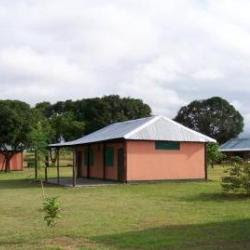 Se acerca el inicio de la temporada de pesca en la Orinoquía, uno de los mejores lugares para la pesca del Pavón (Peacock Bass) en el mundo y PESCA EN LA SELVA lo invita a disfrutar de ella.
Se acerca el inicio de la temporada de pesca en la Orinoquía, uno de los mejores lugares para la pesca del Pavón (Peacock Bass) en el mundo y PESCA EN LA SELVA lo invita a disfrutar de ella.
La temporada de sol hace que los ríos bajen de nivel y se de inicio a las migraciones de peces, de los cuales podrá pescar: pavones, payaras, sardinatas, caribes, agujetos, arawanas, bocones, yamus, pirañas, cachamas, bagres, cajaros, amarillos, valentones, paletones, mapurites, doncellas etc.
El refugio se encuentra ubicado a 42 kilómetros terrestres de Puerto Carreño, allí encontrará restaurante, luz eléctrica, agua potable y cómodas cabañas con habitaciones y baño privado.
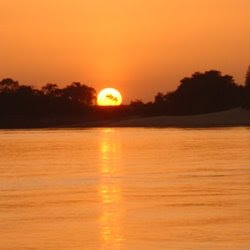 El programa incluye:
El programa incluye:
Recepción en el aeropuerto de Bogotá Colombia, transporte y estadía con alimentación (cena y desayuno) en el hotel donde pasará la primera noche.
Al día siguiente transporte al aeropuerto donde tomará el vuelo hacia Puerto Carreño.
Recepción en el aeropuerto de Puerto Carreño y transporte terrestre al refugio .
Alojamiento en el refugio.
Alimentación (tres comidas diarias) en el refugio .
Seis días de pesca en el río Bita, en embarcaciones de fibra de vidrio para dos pasajeros cada una, equipadas con motores Suzuki 2T 15 HP y manejadas por motoristas expertos.
Hielo permanente ,bebidas naturales, bebidas gaseosas
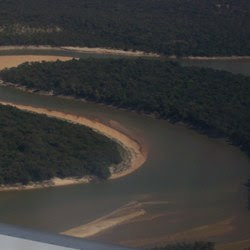 cervezas y licores nacionales durante su estadia.
cervezas y licores nacionales durante su estadia.
Transporte refugio - aeropuerto Puerto Carreño.
Trayecto aéreo Puerto Carreño – Bogotá.
No incluye: tiquetes aereos desde su procedencia hasta Bogota (Colombia) Bebidas alcohólicas importadas estas se venden por separado.
Friday, May 16, 2008
"Aquí está el indio". Joropo venezolano.
Added: August 23, 2007
La Sexta Básica son:Guitarra, voz y dirección: Pablo EscalonaGuitarra: José Manuel CardonaMandolina y Bandola llanera: Mariana CardonaMandolina y voz: Roselyn RondónCuatro y voz: Lilian Córdova
Monday, May 12, 2008
Los Llaneros
1994 223p.
by Jose Antonio Giacopini Zarraga
& Rafeal Hoogesteijn
Armitano Editores Carracas
ISBN: 980-216-121-7
 Rest assured that this book is one of the best photograph books available about Llanero cowboys, and cattle ranching on the northern plain of the Orinoco River basin in Venezuela. Well worth the investment for your personal library of the region. Most of the photographs were taken in the Estado de Apure which is very wet during the rainy season and is typical of the region north of the Rio Meta extending from Casanare and Arauca in Colombia, into the Estado de Apure in Venezuela. I am a north American who lived on a cattle ranch in the Eastern Colombian Llanos from 1969 until 1982. My interest lies south of the Rio Meta, below Orocue, in the Departments of Meta and Vichada around Villavicencio and Puerto Lopez, in the region Dieter Brunnschwieler referred to in, Llanos Frontier of Colombia 1971, as the badlands of the Serrania, an area somewhat higher in elevation and dryer, but virtually the same grasslands of the Orinoco, as those of the Estado de Apure. Unfortunately there are not many picture books available about the Colombian Llaneros with the exception of Llanos, published by the Corporacion Llanos de Colombia, photography by Diego Samper Martinez, and Llanos de Colombia, published by Litografia Arco. So I included the Venezuelan Llanos in my search and in addition to the book in question (which is excellent) I recommend El Llano by Christian Belpaire, Ediciones Polar, and Venezuela Los Llanos by Gerard Sioen, which both have excellent photographs of cowboys and cattle ranching in the region of the plains of the Orinoco.
Rest assured that this book is one of the best photograph books available about Llanero cowboys, and cattle ranching on the northern plain of the Orinoco River basin in Venezuela. Well worth the investment for your personal library of the region. Most of the photographs were taken in the Estado de Apure which is very wet during the rainy season and is typical of the region north of the Rio Meta extending from Casanare and Arauca in Colombia, into the Estado de Apure in Venezuela. I am a north American who lived on a cattle ranch in the Eastern Colombian Llanos from 1969 until 1982. My interest lies south of the Rio Meta, below Orocue, in the Departments of Meta and Vichada around Villavicencio and Puerto Lopez, in the region Dieter Brunnschwieler referred to in, Llanos Frontier of Colombia 1971, as the badlands of the Serrania, an area somewhat higher in elevation and dryer, but virtually the same grasslands of the Orinoco, as those of the Estado de Apure. Unfortunately there are not many picture books available about the Colombian Llaneros with the exception of Llanos, published by the Corporacion Llanos de Colombia, photography by Diego Samper Martinez, and Llanos de Colombia, published by Litografia Arco. So I included the Venezuelan Llanos in my search and in addition to the book in question (which is excellent) I recommend El Llano by Christian Belpaire, Ediciones Polar, and Venezuela Los Llanos by Gerard Sioen, which both have excellent photographs of cowboys and cattle ranching in the region of the plains of the Orinoco.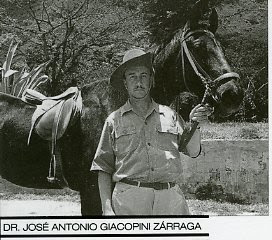 Jose Antonio Giacopini Zarraga was born in 1915, so he was 79 at the time of this publication, and was in a position to have witnessed a great deal of the history and development of the Venezuelan Llanos. He held many positions in the public and private sector, was the Governor of the Federal Territory of the Amazonas from 1948 to 1949 and gave assistance and advice to the National Federation of Cattlemen for many years. As a member of the Sociedad de Ciencias Naturales he traveled the vast interior of Venezuela and gathered information on the nature, flora and fauna of the Llanos, and its population, customs and activities from as early as the 1930’s when Venezuela had less than 3 million inhabitants. During that time he encountered the older generation of Llaneros that had been born to the harsh life of the tropical plains of the Orinoco. Giacopini offers the reader of new generations the image of a long ago Llano and its intrepid vaqueros that will never be again.
Jose Antonio Giacopini Zarraga was born in 1915, so he was 79 at the time of this publication, and was in a position to have witnessed a great deal of the history and development of the Venezuelan Llanos. He held many positions in the public and private sector, was the Governor of the Federal Territory of the Amazonas from 1948 to 1949 and gave assistance and advice to the National Federation of Cattlemen for many years. As a member of the Sociedad de Ciencias Naturales he traveled the vast interior of Venezuela and gathered information on the nature, flora and fauna of the Llanos, and its population, customs and activities from as early as the 1930’s when Venezuela had less than 3 million inhabitants. During that time he encountered the older generation of Llaneros that had been born to the harsh life of the tropical plains of the Orinoco. Giacopini offers the reader of new generations the image of a long ago Llano and its intrepid vaqueros that will never be again.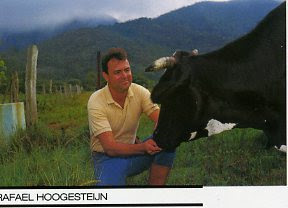 Rafael Hoogesteijn was born in Caracas, Venezuela in 1953. Like Jose Antonio Giacopini Zarraga he too was a member of the Sociedad de Ciencias Naturales, and as such participated in many zoological expeditions throughout the country. From the age of 14 he visited the Llanos frequently. His early experiences on the plains of the Orinoco were associated with Hato Flores Moradas, in the Estado de Guarico, where he first became familiar with the Sabana inundable and photography. Hoogesteijn graduated from the University Central of Maracay in 1978 with a degree in veterinary medicine. Beginning in 1986 he worked as veterinarian and manager of the three cattle herds belonging to Productora Hernandez S.A.; Merecure, Juan Matero, and Las Mangas, which are situated on the sabanas inundables of the Estado of Apure, and has assisted other cattle ranches in a similar capacity in other diverse locations of Venezuela. He has written and lectured about tropical cattle ranching on the sabanas inundables del Estado de Apure, Venezuela on numerous occasions throughout the world. He began his photojournalism of the llanos as a boy, and refined his imagery and appreciation of the beauty of the mounted herder upon the vast plain of the Orinoco with the passage of time, notably during his years at Merecure, Juan Matero, and Las Mangas.
Rafael Hoogesteijn was born in Caracas, Venezuela in 1953. Like Jose Antonio Giacopini Zarraga he too was a member of the Sociedad de Ciencias Naturales, and as such participated in many zoological expeditions throughout the country. From the age of 14 he visited the Llanos frequently. His early experiences on the plains of the Orinoco were associated with Hato Flores Moradas, in the Estado de Guarico, where he first became familiar with the Sabana inundable and photography. Hoogesteijn graduated from the University Central of Maracay in 1978 with a degree in veterinary medicine. Beginning in 1986 he worked as veterinarian and manager of the three cattle herds belonging to Productora Hernandez S.A.; Merecure, Juan Matero, and Las Mangas, which are situated on the sabanas inundables of the Estado of Apure, and has assisted other cattle ranches in a similar capacity in other diverse locations of Venezuela. He has written and lectured about tropical cattle ranching on the sabanas inundables del Estado de Apure, Venezuela on numerous occasions throughout the world. He began his photojournalism of the llanos as a boy, and refined his imagery and appreciation of the beauty of the mounted herder upon the vast plain of the Orinoco with the passage of time, notably during his years at Merecure, Juan Matero, and Las Mangas.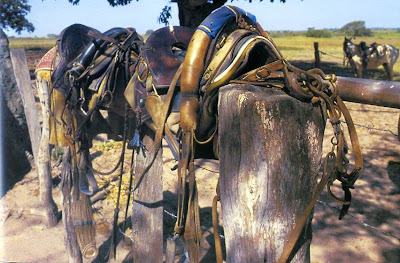
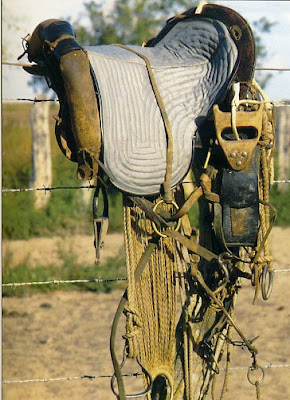
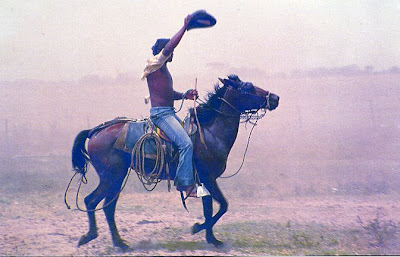 [The caption of this photograph reads: En verano los culateros se tragan todo el polvo de los arreos, trabajando poco apreciado, por lo que el caporal va pendiente que se mantengan en sus puestos en numero suficiente. Hato Matapalos, Apure.]
[The caption of this photograph reads: En verano los culateros se tragan todo el polvo de los arreos, trabajando poco apreciado, por lo que el caporal va pendiente que se mantengan en sus puestos en numero suficiente. Hato Matapalos, Apure.]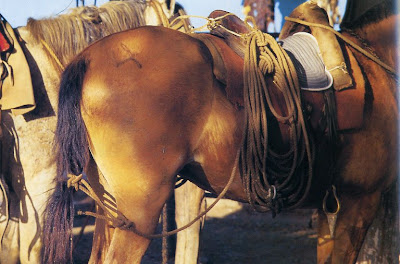 [The caption for this photograph reads: En la cola del caballo, la soga se amarra con un nudo especial el cual lo sujeta fuertemente, pero tambien se puede soltar rapidament si la situacion lo amerita. Buenos caballos sogueros pueden quedar "chucutos," o sin pelos en el rabo por las frecuentes enlazadas. Si ello ocurre se le hace al caballo una especie de tenza para sujetar la soga desde el pecho del caballo hacia atras.]
[The caption for this photograph reads: En la cola del caballo, la soga se amarra con un nudo especial el cual lo sujeta fuertemente, pero tambien se puede soltar rapidament si la situacion lo amerita. Buenos caballos sogueros pueden quedar "chucutos," o sin pelos en el rabo por las frecuentes enlazadas. Si ello ocurre se le hace al caballo una especie de tenza para sujetar la soga desde el pecho del caballo hacia atras.] 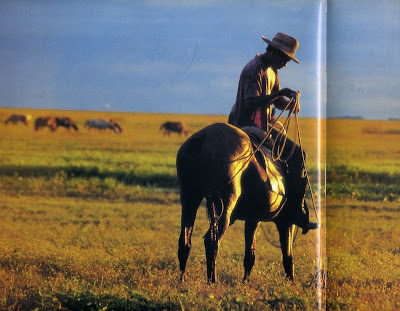 [The caption for this photograph reads: El enrollado y fijacion de la soga a la silla despues de utilizarla es un proceso que debe ser realizado cuidadosament para que el lazo no se enrede en la proxima enlazada, lo cual podria causar una violenta caida al caballo y su jinete.]
[The caption for this photograph reads: El enrollado y fijacion de la soga a la silla despues de utilizarla es un proceso que debe ser realizado cuidadosament para que el lazo no se enrede en la proxima enlazada, lo cual podria causar una violenta caida al caballo y su jinete.]